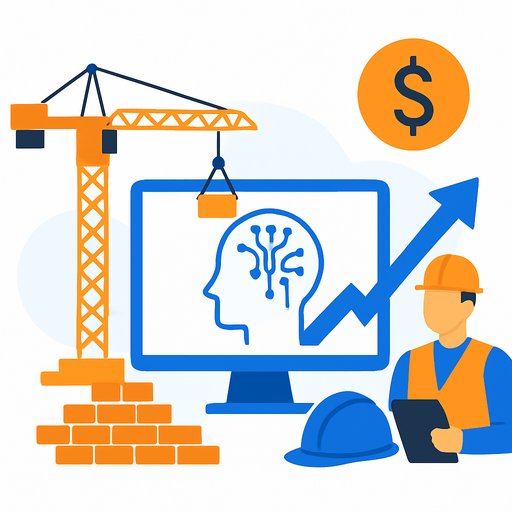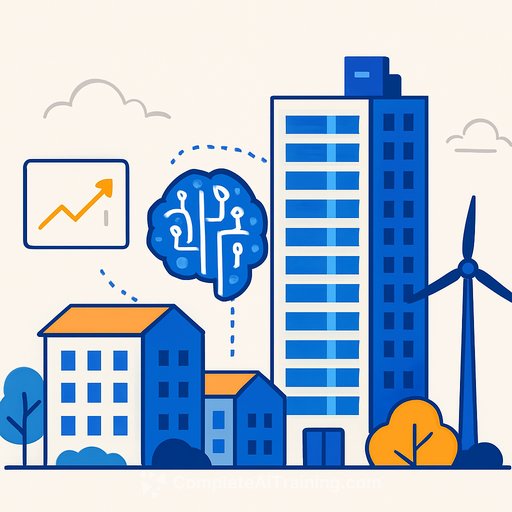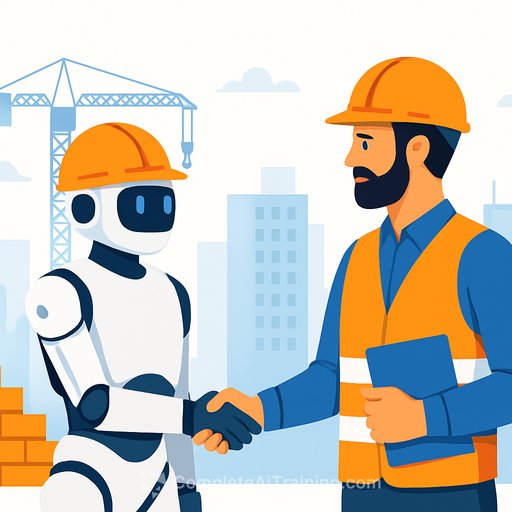Will AI Increase Prices for Construction Materials, Equipment, and Labor?
AI is moving from pitch decks to jobsites. It promises faster schedules, tighter cost control, and fewer safety incidents. The question every developer, GC, and subcontractor is asking: what happens to prices?
The short answer: expect a split. Some line items will trend up as AI-enabled options enter the market, while efficiency gains and better planning push other costs down.
Material Prices: Where Costs Could Rise or Fall
AI's impact on materials will be mixed. Efficiency and intelligence drive savings, while innovation and specialization can add premiums.
- Less waste, tighter buys: Forecasting tools cut over-ordering and spoilage. That lowers demand variance and can stabilize or reduce prices.
- Smarter logistics: AI routes freight, consolidates loads, and flags risks early. Lower transportation volatility means fewer surprise spikes.
- New material demand: High-performance composites, sensor-embedded products, and low-carbon alternatives will carry markups at first.
- Data-driven procurement: Real-time price intelligence and hedging windows improve negotiation leverage and timing.
Action for owners/GCs: deploy material takeoff/forecasting tools, diversify suppliers for sensitive SKUs, and set rules for buying windows. Use predictive maintenance on key equipment to avoid emergency orders.
Equipment Prices: Higher Tech, Smarter Ownership
AI-enabled equipment will often cost more upfront, but it can pay for itself over the asset's life.
- Premium hardware: Autonomous-ready machines, robotic systems, and sensor stacks add capex or rental premiums.
- Longer life, fewer failures: Predictive maintenance reduces unplanned downtime and extends service life, improving total cost of ownership.
- Task-level automation: Robotics can replace niche gear in specific workflows, reducing demand (and eventually prices) for some equipment categories.
- New pricing models: OEMs monetize data with monitoring and performance subscriptions. Expect bundled service plans and usage-based fees.
Action: evaluate equipment on lifecycle economics, not sticker price. Negotiate data access, API terms, and portability so you're not locked into one platform.
Labor Prices: Specialization Up, Routine Work Under Pressure
AI shifts the skill mix more than it eliminates jobs. Expect premiums for technical roles and pressure on highly repetitive manual tasks.
- Specialists earn more: Demand is rising for data, automation, robotics, and cybersecurity roles supporting field operations.
- Upskilling the core crew: Operators, supers, and PMs who learn AI-enabled systems become more productive and command higher pay.
- Automation of risky, repetitive work: Robotics reduce exposure and injuries, trimming incident costs while reshaping certain wage bands.
- Productivity lift: Better planning, fewer bottlenecks, and instant reporting increase output per worker, supporting higher wages without inflating unit cost.
- Risk of stagnation: Roles without reskilling pathways may face wage pressure. This is preventable with targeted training.
Action: build a training pipeline now. Tie wage premiums to proficiency with AI tools that move schedule, quality, and safety.
Contracting and Budgeting Implications
Expect more scrutiny on escalation and performance. Contracts should address data ownership, software uptime, model assumptions, and change management tied to AI outputs.
- Use GMP contingencies for AI-enabled material substitutions and commissioning risks.
- Define acceptance criteria for AI-generated schedules, quantities, and clash detection.
- Set KPIs for downtime, availability of data feeds, and response times for predictive alerts.
What Ultimately Drives Price Direction
- Adoption speed across owners, GCs, trades, and suppliers.
- Supply chain stability and freight volatility.
- Standards and interoperability across OEMs and software.
- Capital costs, interest rates, and insurance incentives tied to safety and quality.
- Availability of training and credentialing for field talent.
Practical Next Steps for Developers, GCs, and Subs
- Run pilots with hard ROI targets: Start with schedule forecasting, reality capture, and predictive maintenance.
- Model total cost of ownership: Include training, data subscriptions, sensor replacements, and integration work.
- Negotiate data rights early: Access, portability, and reuse should be in your OEM and software contracts.
- Align incentives: Tie shared savings to waste reduction, rework avoidance, and equipment uptime.
- Upgrade safety programs: Use AI-driven observation and near-miss detection to lower incident rates and premiums.
- Invest in skills: Build internal credentials for AI-enabled estimating, scheduling, and equipment operations.
Bottom Line
Expect higher prices for AI-heavy materials and equipment upfront, while waste reduction, smarter logistics, and higher productivity put downward pressure on overall project cost. Labor will trend more skilled and better paid, supported by automation of dangerous work and stronger output per hour.
The firms that win will get specific: pick two or three AI use cases, lock in data terms, and train crews. That approach cushions near-term premiums and moves you toward lower unit costs over time.
Helpful resources: See industry analysis on AI's impact on productivity from McKinsey. For role-based AI upskilling, explore Complete AI Training: Courses by Job.
Your membership also unlocks:






